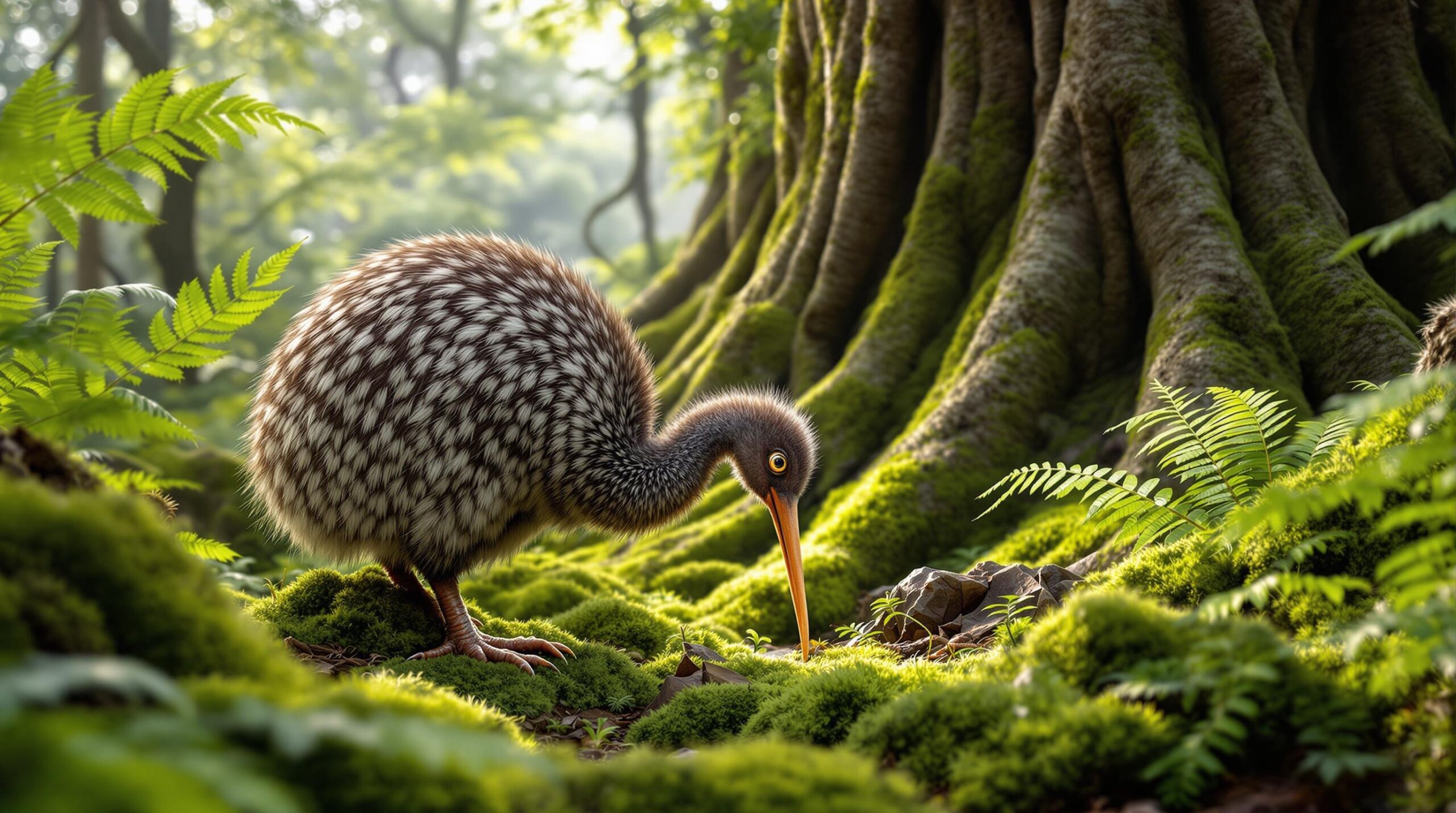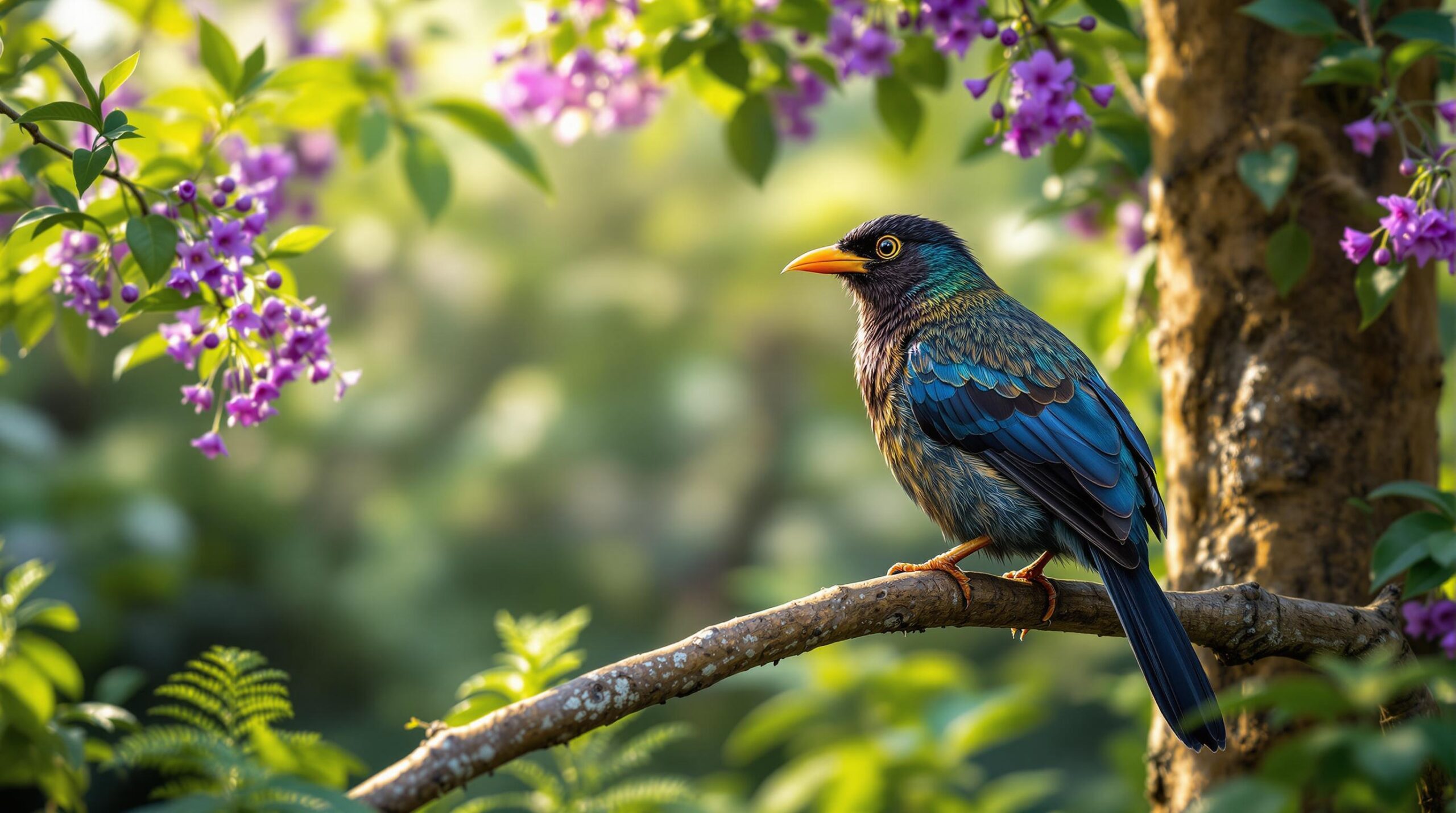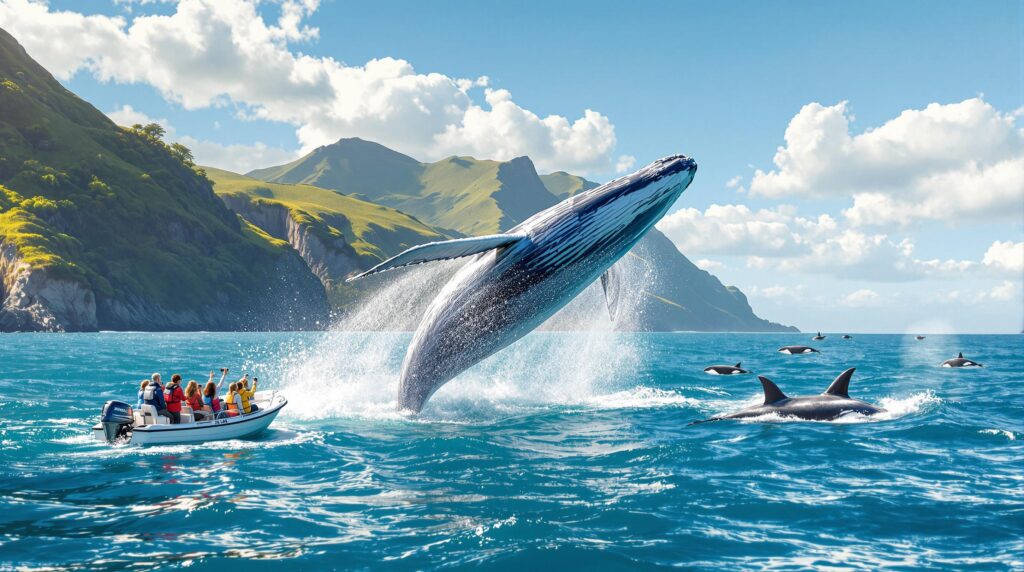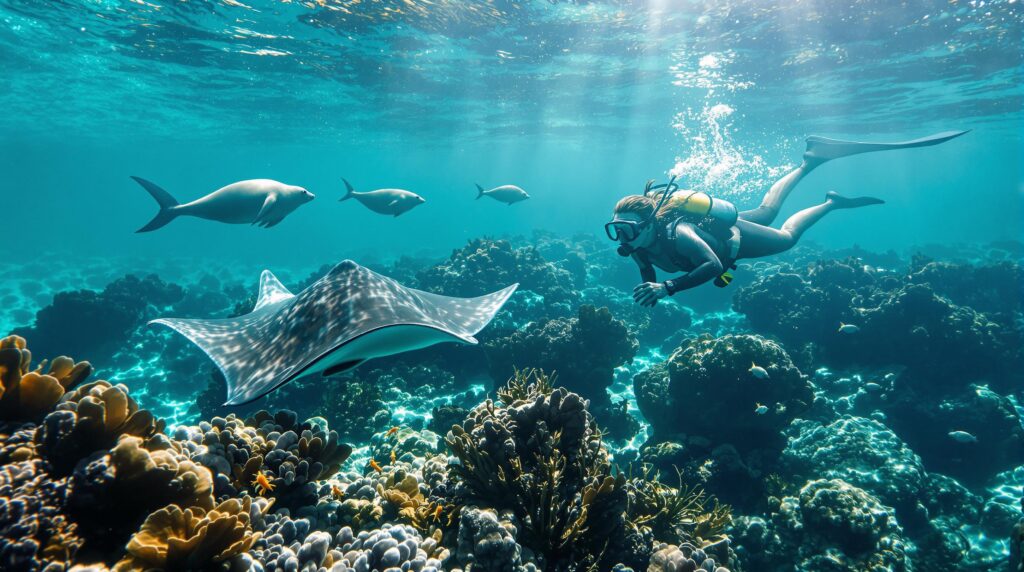My heart races as I wander through the lush trails of New Zealand, where native birds add a magic touch to every journey. I have always felt a deep connection with nature during my hikes, sharing moments with elusive kiwi, playful fantails, and resounding tui songs echoing in the forest. The experiences I’ve collected over the years are filled with vibrant sights and cheerful chirps, making each hike an unforgettable immersion into the wild. This narrative guides you through the best native birds to watch while hiking in New Zealand, offering personal tips, gear recommendations, and conservation insights from a traveler who has embraced every moment of exploration.
The pace slows when you truly observe these remarkable creatures. Beyond the visual delight, you can enjoy the gentle rustle of leaves, feel the crisp mountain air, and smell the earthy aroma of moss and ferns. I invite you to join me on an adventure where every step is a discovery, where Birdwatching Equipment and Photography Gear become your trusted companions, and where inspiration is hidden in every nook of these captivating trails. Let’s dive into the world of New Zealand’s native birds, enriched with practical tips and heartfelt advice.
Native birds in new zealand: a unique spectacle on hiking trails
Strolling through the winding trails of New Zealand, one cannot help but be mesmerized by the endless parade of birdlife. Each footstep unveils a new secret; a distant flash of green from a New Zealand Parakeet (Kakariki) or the gentle probing of a kiwi, as it searches for its next meal. The diversity of species found here is a reminder of a pristine ecosystem, evolving in isolation. I often find myself pausing to appreciate the intricate songs of the tui, whose melodious calls provide a natural symphony that elevates the entire hiking experience.
I recall a morning hike near Fiordland when the forest came alive with the sound of chirps and rustles. The magical interplay of light and shadow, the rustling underbrush, and the dance of these birds rejuvenated my spirit. Amidst this biodiversity, I felt an immediate connection to these wild creatures, each with its distinct character. Exploring places like the renowned Tongariro Crossing Hike or venturing into hidden reserves, I discovered that every trail holds surprises waiting to be unveiled.

A memorable part of these adventures is the encounter with birds that seem to have stepped out from a prehistoric era like the flightless kiwi, whose unique gait and curious nature make it an icon of New Zealand’s wildlife. As I move along the trails, I often see other species such as the fantail, whose playful acrobatics and speedy flights remind me that nature is an ever-changing canvas. Each species not only adds color and sound to the landscape but represents millions of years of evolution and adaptation—a living testament to New Zealand’s isolated development.
The ritual of birdwatching here is deeply personal. Whether using your trusty Binoculars or simply letting your eyes wander with wonder, every moment feels like discovering a hidden chapter in an ancient story. I always keep a notebook to jot down sightings—notes that serve as reminders of each encounter. This blend of mindfulness and adventure transforms a simple hike into a cherished memory. Often, I pair these journeys with other nature explorations like visits to local bird watching hotspots featured in guides such as the Top Bird Sanctuaries available online or check out detailed advice on New Zealand bird watching experiences.
Every trail also whispers myriad practical details that can enhance your exploration. Choosing the right Outdoor Clothing and Hiking Gear is crucial in ensuring that you embrace these encounters without compromising comfort. Whether you are equipped with Camping Essentials for a night under the stars or packed with Travel Accessories handy in rugged terrain, you will notice the subtle balance between modern convenience and the raw beauty of the land.
To offer you practical guidance, here is a quick list to remember when planning your birdwatching hike:
- 🌟 Bring reliable Birdwatching Equipment like enhanced Binoculars
- 🌟 Pack durable Outdoor Clothing and weather-resistant layers
- 🌟 Equip yourself with robust Hiking Gear from trusted brands like Black Diamond
- 🌟 Don’t forget your Photography Gear, such as a high-quality Canon camera
- 🌟 Essential Camping Essentials for overnight stays
The variety and beauty of native birds in New Zealand truly enrich any hiking experience. I have often marveled at the structured harmony of nature, much like a well-composed symphony where each note holds a unique place in the overall melody. This serene interaction between man and nature convolves into an unforgettable mosaic of sounds, sights, and sensations that make every journey soulful and rejuvenating.
For a deeper exploration of these wild wonders, check out useful resources like the Queenstown Adventures page that details various activities amidst natural landscapes and inspiring hiking narratives.
Birdwatching here is not just a hobby, but a way to respect and celebrate Wildlife Conservation efforts across the country. With guided tours and adventure packages available, enthusiasts can immerse themselves in curated experiences that highlight both the beauty and fragility of these native species. As you venture out, let nature’s grandeur sweep you into a mesmerizing tale of resilient ecosystems and heartwarming encounters that remain etched in your memory.
Birdwatching tips and essential gear for hiking adventures in nz
Every hiking adventure in New Zealand offers a new opportunity to engage with nature’s finest performances. My passion for birdwatching has taught me that success is rooted in preparation. Being well-versed in local bird species and carrying the right gear is key to an enriching experience. I have found that blending traditional methods with modern technology makes each excursion both comfortable and fascinating. Maintaining a checklist of equipment ensures that no essential item gets left behind—a strategy that has always rewarded me with vivid, lasting memories.
When planning a trek, I first consider the weather and terrain. The unpredictable climate in many parts of New Zealand demands clothing that adapts quickly. Investing in high-quality Outdoor Clothing from known names such as The North Face is a must. Layering smartly, combined with waterproof gear, helps combat sudden showers and chilly breezes prevalent in the more remote areas.
One of my most loved items on every hike is a pair of top-notch Binoculars. Their ability to bring faraway birds into clear focus transforms how I view the world around me. Brands like Swarovski and Nikon have consistently delivered exceptional performance even in tough conditions. Paired with a comfortable strap and protective casing, these binoculars become the primary tool in my birdwatching arsenal. Using them effectively gives me a glimpse into the secret lives of birds that are otherwise invisible to the naked eye.
Aside from visual enhancements, sound plays an important role in birdwatching. I often use recording devices to capture songs and calls, preserving the moment with Photography Gear that includes both cameras and audio recorders. High ISO performance and rapid shutter speeds provided by brands like Canon and Sony help freeze the most fleeting movements of native birds. These details not only enrich my personal log but also contribute to better understanding of these species.
Planning your gear can become an enjoyable ritual in itself. Below is the table summarizing some essential equipment recommendations for hiking enthusiasts:
| ⭐ Equipment | ⭐ Recommended Brand | ⭐ Purpose |
|---|---|---|
| Binoculars | Swarovski / Nikon | Close-up views of native birds |
| Outdoor Clothing | The North Face / Patagonia | Weather protection during hikes |
| Hiking Gear | Black Diamond / Osprey | Backpacks and trekking poles |
| Photography Gear | Canon / Sony | Capturing high-quality images |
| Camping Essentials | REI / Coleman | Overnight accommodation support |
During my hikes, I also rely on trusted Nature Guides. These guides not only provide detailed maps and bird species information but also lead you through the best trails where birds relay their secret lives. Online platforms often feature interactive maps and local knowledge, mirroring my own experiences enriched by advice from comprehensive bird watching guides available on specialized websites.
An essential part of the journey is preparing for unforeseen moments. Carrying a compact first-aid kit, portable water, and Travel Accessories like headlamps is vital for long treks under variable conditions. I have found that having a well-organized backpack, with dedicated compartments for each piece of equipment, enhances the overall hiking experience. This meticulous planning allows me to savor each bird encounter without worry.
My cherished lists and routines often include checking off items as I pack. I use apps to manage my Birdwatching Equipment inventory, ensuring that every essential—from Camping Essentials to backup batteries for my camera—is in place. Making sure that every item is perfectly arranged gives me peace of mind for the duration of my adventure.
Exploring various terrains requires constant adaptation. The choice of gear might change depending on the specific route; for steep mountain trails, robust Hiking Gear is indispensable, while forest trails demand light and flexible clothing options. I recommend exploring local listings such as Natural Wonders in New Zealand that also spotlight ideal hiking conditions and the gear best suited for each scenario.
For those who love to document nature, nothing beats the experience of shooting high-resolution photos with advanced Photography Gear. Balancing technical settings and capturing raw, real-time moments defines the essence of my hikes. As you embrace the wilderness, remember that every life, every chirp forms part of a grand mosaic that reminds us why Wildlife Conservation is so critical. Taking part in guided Adventure Tours can also offer deeper insight into conservation efforts and bring you closer to native avian wonders.
The thrill of spotting a rare bird, as elusive as the rifleman, while surrounded by the breathtaking wilderness of New Zealand, is an experience that elevates the spirit. The meticulous combination of seasoned preparation, the right gear, and a passion for nature transforms any hike into an indulgent sensory experience. Every moment feels like a conversation with the wild, each note a gentle reminder of nature’s persistent allure.
Exploring nz native bird species in depth
Every encounter with New Zealand’s native birds deepens my understanding of nature’s complex relationships. While traversing diverse landscapes from coastal regions to dense native forests, I have spent countless hours immersed in the study of species such as the charismatic kiwi and the vibrant fantail. Every sighting paints a detailed portrait of evolution, adaptation, and the sheer resilience of these birds, each one contributing to a vibrant ecosystem.
Diving into these species’ habits has been a journey of discovery. I have observed the kiwi, whose slow, meticulous movements often hide its elusive nature. With a long beak and a curious snuffling sound, this bird reminds me of the ancient lineage that thrives in New Zealand’s secluded forests. Other species, like the vibrant Tui, emerge with spectacular calls and striking appearances, forming a crucial part of the forest soundscape. Their role in seed dispersal and pollination reiterates the interdependence within nature—a delicate balance that continues to amaze me at every turn.
In my explorations across the wild, I have taken every opportunity to study these birds up close. Equipped with robust Binoculars and high-resolution Photography Gear from Canon, I capture intimate details of their behavior. It is fascinating to note how even the small Rifleman (Titipounamu)—New Zealand’s tiniest bird—adds to the rich tapestry of sounds that echo through the trees. Each glimpse of the forest reveals multiple stories, inviting you to delve deeper into their intricate lives.
My research and observations have led me to compile a detailed list of species that every bird enthusiast should watch for. The following list, replete with emojis to highlight key points, reflects my personal favorites:
- 🦉 Kiwi – A symbol of New Zealand’s unique evolution
- 🦜 Kaka – Colorful forest parrots buzzing with energy
- 🐦 Fantail (Piwakawaka) – An agile acrobat in pursuit of insects
- 🎶 Tui – Melodious songsters essential for forest pollination
- 🐤 Robin (Toutouwai) – Friendly and inquisitive, often near hikers
- 🕊️ Woodpigeon (Kereru) – Majestic fliers with shimmering green feathers
- 🔔 Bellbird (Korimako) – Noted for its enchanting calls during summer
- 🐥 Tomtit (Ngirungiru) – Diminutive explorer with swift movements
- 🦅 Weka – Bold, flightless foragers adding mischief to trails
- 👀 Silvereye (Pihipihi) – Tiny flock travelers often noticed by their bright eyes
My passion for these birds is intertwined with a commitment to preserving their environments. The ongoing efforts in Wildlife Conservation in New Zealand remind me that every observation is an opportunity to contribute to ecological preservation. I’ve been fortunate enough to join various Adventure Tours that emphasize sustainable practices while showcasing the nation’s most rare species. These experiences not only deepen my love for birdwatching but also encourage me to support initiatives that protect these invaluable natural treasures.
Keeping track of these species and their habits has also allowed me to compare details side by side. Below is a table summarizing key features of some of my most observed birds:
| ⭐ Species | ⭐ Key Trait | ⭐ Typical Habitat |
|---|---|---|
| Kiwi | Flightless, nocturnal, unique beak | Native forests & reserves |
| Fantail | Agile, acrobatic flyer | Urban parks & dense woodlands |
| Tui | Distinct tuft of white, melodious | Mixed forests & suburban gardens |
| Robin | Curious, follows hikers | Conservation areas |
| Weka | Bold, opportunistic, foraging behavior | Mountain trails & coastal areas |
These detailed observations have spurred my commitment to encourage fellow hikers to practice responsible birdwatching. Using apps like iBird NZ or relying on reliable field guides, you can enrich your knowledge while staying engaged with nature’s unfolding narrative. Resources such as Travel Guides and local insights on Hiking Trails for Bird Watching greatly support this mission.
Along the way, I have had interactions that remind me how personal and vivid these encounters can be. Sharing moments with local birdwatchers, I always treasure the mix of traditional knowledge and modern techniques. Whether you use Camping Essentials on a multi-day trek or rely on compact Travel Accessories during day trips, your gear becomes an extension of your passion. The thrill of discovering an unknown species, recorded seamlessly with my trusty Canon and supported by quality hiking gear from Black Diamond, is incomparable.

The beauty of these moments inspires me to continue exploring New Zealand’s diverse landscapes. Each species has a story, a role, and a charm that leaves me in awe no matter how many hikes I undertake. This deep dive into native bird species not only broadens my horizons but also reinforces a commitment to environmental stewardship—a value I share with many fellow explorers on various Adventure Tours.
Working together with passionate conservation groups, I have witnessed significant efforts to protect these species. Engagement with local communities and participation in guided eco-tours are stepping stones to a greater understanding of our natural heritage. Each trail, each bird sighting, and each sound captured is a reaffirmation of New Zealand’s place as a living laboratory of evolution and wonder.
Wildlife conservation and adventure tours: preserving nz natural heritage
The landscapes of New Zealand have a way of transforming every hiking endeavor into an encounter with natural splendor. Over time, my experiences here have taught me the intrinsic value of preserving what nature has sculpted so beautifully. Amid the exhilaration of hikes, there exists an ongoing conversation about sustainability and conservation—each step echoing the responsibility to protect our wild habitats.
While marveling at the native birds during my treks, I have also witnessed the tireless efforts of local communities, researchers, and eco-guides dedicated to Wildlife Conservation. Moments spent with conservation teams, studying bird populations or restoring native vegetation, have left a profound mark on me. I have seen how simple gestures, like cleaning up trails or reporting invasive species, contribute to the larger picture of environmental stewardship.
This blend of adventure and advocacy is evident when joining specialized Adventure Tours that place sustainability at their core. Whether it’s a guided tour through pest-free islands or a collaborative project to monitor endangered birds, these experiences bring together excitement and a deep sense of duty. I love hearing stories from tour leaders about how each observation fuels further conservation actions. They explain how initiatives ranging from rediscovering native species to ensuring responsible visitor practices are crucial in preserving the delicate balance of our ecosystems.
The role of proper gear in supporting these experiences cannot be overstated. Outfitting oneself with robust Hiking Gear, quality Outdoor Clothing, and reliable Camping Essentials reinforces the idea of being prepared to explore responsibly. With trusted brands like Osprey for backpacks and dedicated Travel Accessories, every adventurer is better equipped to face the rugged terrains while keeping an eye on nature conservation. I always make it a point to research and choose items that are not only effective but also manufactured with sustainable practices in mind.
Local experts often share tips on how to minimize our footprint during these adventures. One such tip is to stick to marked trails, reducing the risk of disturbing fragile ground ecosystems. Additionally, carrying eco-friendly supplies and adhering to strict biosecurity guidelines help in protecting the native flora and fauna. Communities in New Zealand share their stories in vivid detail—whether discussing the historical lineage of the kiwi or the mysterious lives of the more reclusive species, each tale underscores the significance of sustainable tourism.
For instance, I recently came across a remarkable guided tour that emphasized the importance of local culture and environmental respect, details of which I found on pages like Christchurch Activities that blend modern adventure with deep-rooted ecological wisdom. I have also learned about secret hiking trails and scenic views from sources such as Unique Fauna guides and inspiring road trip narratives like the one on Scotland Road Trip New Zealand.
Sharing stories over a warm cup of coffee after a long hike often sparks discussions on our shared responsibility. I reminisce about meeting fellow travelers who, like me, value the importance of preserving every note sung by the native birds or every rustle of the wind against ancient trees. These exchanges often include recommendations for reliable Nature Guides and local eco-friendly products. Resources that focus on Birdwatching Equipment and Photography Gear offer practical insights as well as ways to support local artisans and sustainable brands.
In an effort to further motivate responsible travel, I compile lists and recommendations that marry adventure with ethical practices. Here is a quick checklist that I always refer to before embarking on any tour:
- 🚀 Ensure all Camping Essentials are eco-friendly
- 🚀 Pack minimalist yet efficient Hiking Gear
- 🚀 Choose sustainable Outdoor Clothing from ethical brands
- 🚀 Bring along top-notch Birdwatching Equipment like high-grade binoculars
- 🚀 Leverage local Nature Guides for authentic experiences
Documenting these moments with high-quality Photography Gear not only helps preserve memories but also spreads awareness. I often upload my finds to social media, sharing insights with communities of like-minded adventurers. Platforms such as Innovative Birdwatching initiatives provide wonderful inspiration and practical advice, serving as a guide for sustainable practices on the trails.
Equally valuable is the chance to participate in local conservation events, where experts share new findings and celebrate progress in Wildlife Conservation. Community efforts, combined with small individual acts of care, allow nature to flourish. My experiences here reaffirm that every bird caught in flight, every chirp heard along the trail, and every dance of sunlight through the leaves contributes to a symphony of life that is both enduring and magnificent.
Ultimately, every adventure fills my heart with gratitude. The shared responsibility of protecting these natural wonders is an experience that continues to grow with each step. I invite you to explore responsibly, cherish every moment with native birds, and perhaps even join an Adventure Tour that offers deeper insights into the eco-friendly practices that preserve this delicate paradise for future generations.
FAQ
❓ What are the best times to go birdwatching while hiking in New Zealand?
Birdwatching is often most rewarding during early morning and late afternoon when birds are actively feeding and singing. Spring and summer provide excellent opportunities to see a variety of native species thriving.
❓ Which essential gear should I bring on a birdwatching hike?
I recommend carrying high-quality Binoculars, durable Outdoor Clothing, specialized Hiking Gear, and reliable Photography Gear to capture moments. Also, don’t forget your Camping Essentials and trusty Birdwatching Equipment for an enriching experience.
❓ How can I contribute to wildlife conservation during my hikes?
Practice responsible hiking by sticking to marked trails, cleaning your gear, and avoiding any disturbance to nests and habitats. Joining guided Adventure Tours and supporting eco-friendly initiatives also helps in conserving nature.
❓ Are there guided tours available to help first-time birdwatchers?
Yes, many local operators offer guided tours that focus on native bird species and conservation efforts. Using reputable guides can enhance your experience, as shared on platforms like Natural Wonders and through community recommendations.
❓ Where can I find detailed information about New Zealand’s native birds?
Resources are plentiful online. Check out comprehensive guides and articles on bird watching such as those available from New Zealand Birdwatching Guides and explore expert advice on local tourism websites. This information is invaluable for planning your trips and expanding your knowledge.
Hi, I’m Mark, a 38-year-old travel writer who traded his backpack for a peaceful life in New Zealand. After exploring dozens of countries, I’ve found my home among native bush, coastal walks, and the welcoming spirit of Kiwis. I now write about hidden gems, soulful places to stay, and local tips to help travelers experience the real New Zealand – slow, beautiful, and full of meaning.



